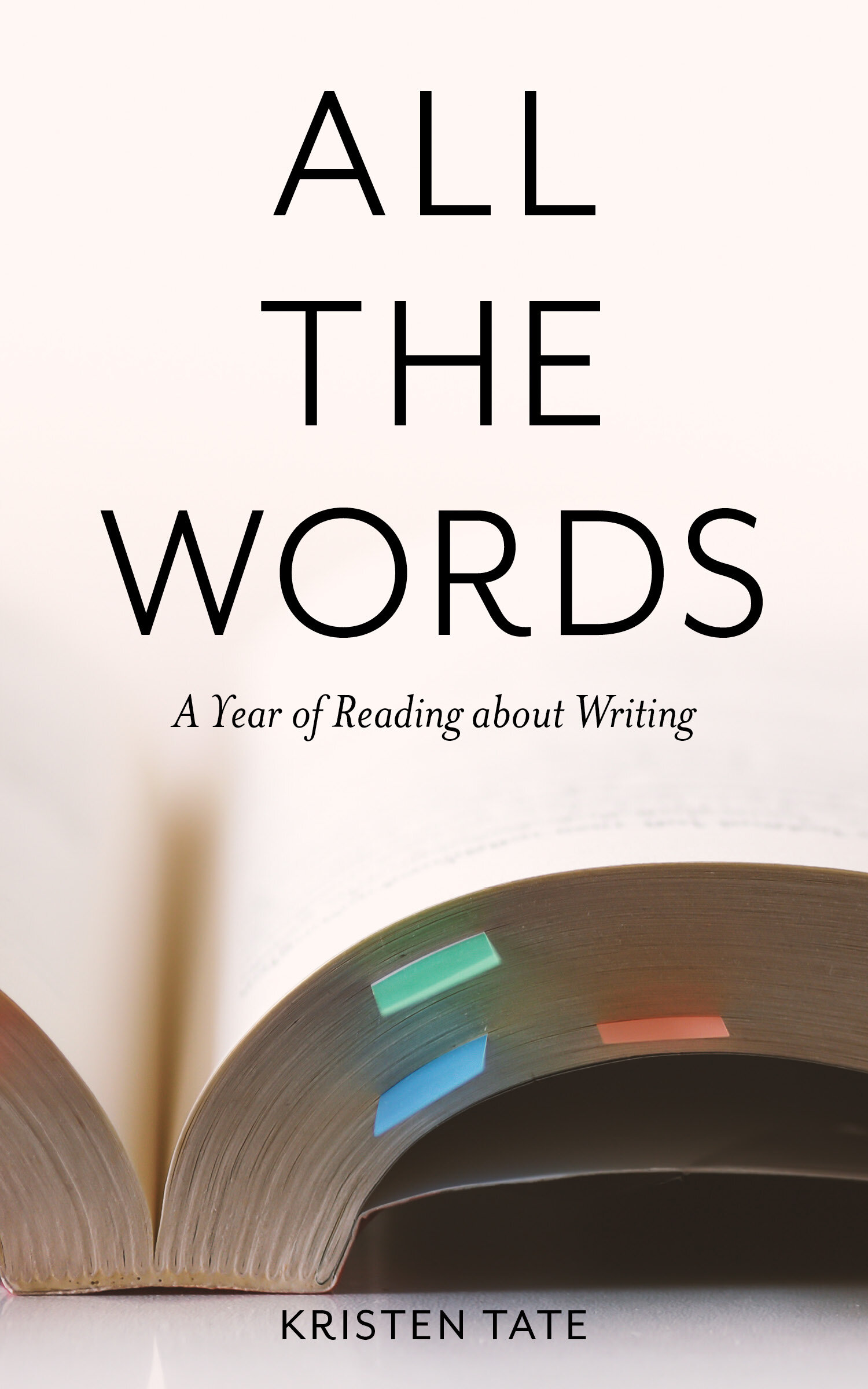Writing into the Dark, by Dean Wesley Smith
This is part of a series of weekly reviews of writing craft books written in 2019, later revised and collected in Kristen’s book All the Words: A Year of Reading About Writing. Read the first chapter or buy the book in our Shop.
It is week thirty-one of 2019. How’s the writing going for you these days? I’m camping in the redwoods this weekend and bringing along a fresh new legal pad and my favorite pens in the hopes that I can do some scribbling and planning for my novel, which is just starting to come into focus. Also on the agenda: hiking, lounging, and lots of eating. I hope y’all are enjoying a similarly decadent weekend or have one coming up.
This week’s book, Writing into the Dark: How to Write a Novel without an Outline by Dean Wesley Smith, is so radically different in style and temperament from Jane Alison’s Meander, Spiral, Explode that the juxtaposition made my head spin. This is a rough and ready kind of book, focused on method rather than theory.
Let’s see what these methods boil down to:
Get started by putting a character into a scene and climbing into their head. “Don’t allow yourself to type one word that doesn’t come from the character’s opinion or sensory feelings or emotions.”
Write the next sentence. Just keep going. “Suck it up and write the next sentence. And then the next.” But that next sentence doesn’t necessarily have to be the next sentence as the reader will encounter it.
You can jump forward in time. If you know what’s going to happen in a later scene but don’t know how you are going to get there, jump to that scene and start writing. You can go back and fill in the gap later. Smith calls this learning how to be “unstuck in time” in your novel.
You can go back to what you’ve already written. If you can’t see the next sentence yet, go back to an earlier point of the book and move forward, adding and revising, until you’ve built up momentum to vault you past the white space. Smith calls this “cycling.”
Outline as you go. After you finish a scene, write a quick note about what happened in the scene and where you left your characters. You can use this outline to quickly pick up from where you left off (particularly useful for novels with multiple points of view) or diagnose where you might have taken a wrong turn in your plot.
Be willing to write into dead-ends and then cut the material. Sometimes you have to explore the terrain to find the best path. And all writing is practice and therefore valuable. “When you are writing new words, you are never wasting your time.”
Revise as you go. Smith proclaims, “YOU ARE NOT GOING TO REWRITE THE BOOK,” (yes, in all caps) and thus doesn’t want you to write a sloppy draft the first time through. What he actually does, however, is revise as he goes, through his cycling method.
If you get stuck, you may have written past the ending of a scene. Go back and read the scene and see if you see an ending. If so, cut off the extra material and start a new scene.
I cannot tell you if this will work for you (and my editor’s brain and Virgo soul are both fretting over Smith’s stance on revision), but I do think that many of his methods are worth a try for you pantsers out there, perhaps for the plotters too. And Smith himself would be the first to tell you to adapt them to your own purposes (which this editor will tell you should include revision).
Here’s to writing into the dark, y’all,
Kristen
Check out our Resources page for more in-depth articles on writing, revising, polishing, and publishing your novel. Sign up for our weekly newsletter for fresh content, and you’ll also get our free PDF with recommended reading for writers!


